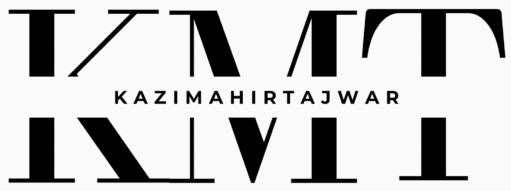Bangladesh has stepped onto the global stage with a clear and powerful message through its latest climate commitment. The Bangladesh NDC 3.0, or Third Nationally Determined Contribution, is not just another policy document; it is a comprehensive roadmap for a low-carbon, climate-resilient future. As a nation on the frontlines of climate change, Bangladesh has crafted this plan to serve as both a national development strategy and a bold statement of its commitment to the Paris Agreement. This guide will explain the key targets, strategic actions, and the monumental $116.18 billion investment required to turn this vision into reality.
What is the Bangladesh NDC 3.0?
The Bangladesh NDC 3.0 is the country’s updated climate action plan submitted to the United Nations Framework Convention on Climate Change (UNFCCC). It outlines the specific measures Bangladesh will take through 2035 to reduce its greenhouse gas (GHG) emissions and adapt to the impacts of climate change. This plan is particularly significant given Bangladesh’s unique position.
The country contributes less than 0.5% of total global GHG emissions, yet it is one of the most vulnerable nations to the adverse effects of climate change, including rising sea levels, extreme weather events, and floods. The Bangladesh NDC 3.0 acknowledges this disparity, framing Bangladesh’s actions within the principles of climate justice and global solidarity. It serves as a national strategy to weave climate action into every thread of its development fabric, from energy and industry to agriculture and urban planning.
The Core Targets: Ambitious Emission Cuts by 2035
The cornerstone of the Bangladesh NDC 3.0 is its set of clear, quantifiable emission reduction targets for 2035. These targets are measured against a “Business-As-Usual” (BAU) scenario, which projects that without new interventions, Bangladesh’s emissions would reach 418.40 million tonnes of CO2 equivalent (MtCO2eq) by 2035. To counter this, Bangladesh has set a two-tiered target.
- First, an unconditional target, which the country commits to achieving using its own resources. This involves a 6.39% reduction in GHG emissions, equivalent to 26.74 MtCO2eq, below the BAU level.
- Second, a more ambitious conditional target that depends on receiving adequate international support through climate finance, technology transfer, and capacity building. This conditional goal aims for an additional 13.92% reduction, or 58.23 MtCO2eq.
Together, these commitments aim for a total emissions reduction of 84.97 MtCO2eq, a remarkable 20.31% decrease from the projected BAU level by 2035.
Free Bangla Ebook: 200+ Amazing Books to Download Instantly!
The Laziest Way to Change Your Life
Mapping Funding for Intersectional Organizing in the CEECCNA Regions by Dalan Fund (2025)
60+ Modern CV/Resume Templates
40+ Classic CV/Resume Templates
100+ CV/Resume Templates
Sector-by-Sector: How Bangladesh Will Achieve Its Goals
Achieving a 20.31% reduction requires a coordinated effort across all major sectors of the economy. The Bangladesh NDC 3.0 outlines specific mitigation actions for each.
- Energy Sector: As the largest source of emissions, the energy sector is central to the mitigation strategy, targeting a massive 69.84MtCO2eq reduction. Key actions include a major expansion of renewable energy sources like solar and wind, reducing transmission losses, electrifying 348 km of railways, promoting electric vehicles (EVs), and boosting industrial energy efficiency.
- Agriculture, Forestry & Other Land Use (AFOLU): The AFOLU sector aims to cut emissions by 12.71 MtCO2eq. This will be achieved through climate-smart agricultural practices like Alternate Wetting and Drying (AWD) for rice cultivation, which reduces methane emissions. Other priorities include improving livestock feed, better manure management through biogas and composting, and large-scale reforestation and coastal afforestation projects to enhance natural carbon sinks.
- Waste Sector: The waste sector will contribute a 1.78 MtCO2eq reduction below the BAU level. This involves capturing landfill gas for energy, establishing integrated material recovery facilities to improve recycling, and building modern sewage and sludge treatment plants to manage methane emissions from wastewater.
- Industrial Process and Product Use (IPPU): Though a smaller contributor, the IPPU sector targets a reduction of 0.64 MtCO2eq. This will be accomplished by implementing Carbon Capture, Utilization, and Storage (CCUS) technology in new fertilizer plants and phasing down ozone-depleting substances in line with the Kigali Amendment.
The $116 Billion Plan: Funding the Green Transition
Ambition of this scale requires significant investment. The total estimated cost to implement the Bangladesh NDC 3.0 is a staggering USD 116.18 billion through 2035. This is broken down into USD 25.95 billion for the unconditional targets, which will be financed domestically, and a much larger USD 90.23 billion needed to achieve the conditional targets. This highlights the critical role of the international community.
Full realization of Bangladesh’s climate ambition hinges on scaled-up international climate finance, access to cutting-edge technology, and robust capacity-building support to unlock its full potential. The plan outlines a strategy to mobilize these resources through bilateral and multilateral partners, green bonds, and international carbon markets like those under Article 6 of the Paris Agreement.
More Than Numbers: Adaptation, Justice, and a Resilient Future
The Bangladesh NDC 3.0 is about more than just reducing emissions. It is deeply integrated with the country’s urgent need for climate adaptation. Guided by the National Adaptation Plan (NAP 2023-2050), the NDC prioritizes 65 critical interventions to protect its communities and ecosystems from climate impacts. The plan also squarely addresses the issue of Loss and Damage, acknowledging the approximately USD 3 billion in climate-related damages the country already faces annually.
A core principle woven throughout the document is the concept of a “Just Transition.” This ensures that the shift to a low-carbon economy is equitable, creates decent work, protects the livelihoods of vulnerable groups, and extends social protection to communities most affected by the transition away from carbon-intensive industries.
A Path Forward
The Bangladesh NDC 3.0 is a testament to the nation’s resolve. Despite its minimal contribution to the climate crisis, Bangladesh is committing to an ambitious path that far exceeds its fair share. The plan is a clear, detailed, and pragmatic blueprint for building a prosperous, resilient, and sustainable nation. However, its success, particularly the more ambitious conditional targets, rests on a foundation of global partnership. As Bangladesh takes these bold steps, it issues a call to the world for fairness and solidarity, ensuring that vulnerable nations are empowered to build a safer future for all.











